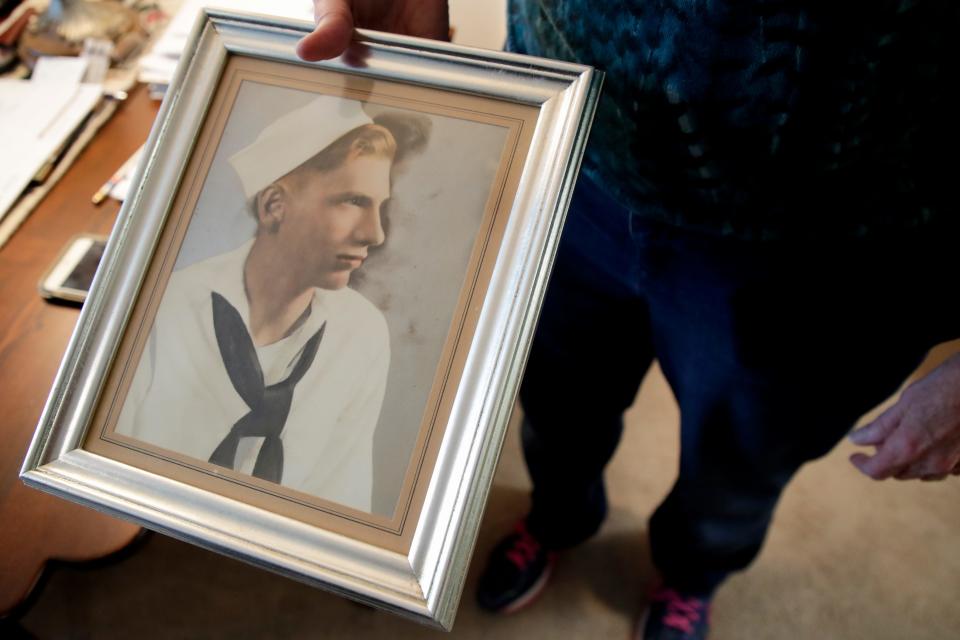Finding religion in a day of infamy: Pearl Harbor was turning point, FSU professor says
Dec. 7, 1941, the day 2,300 other American troops died, is the day that set the U.S. on the path to a more religiously tolerant nation, according to Florida State University Associate Professor of History Kurt Piehler.
Piehler's “Religious History of the American GI in World War II” identifies Pearl Harbor as the trigger needed to engage the U.S. in a worldwide war about religious freedom.
"One of the linchpins of FDR's core beliefs was that religion was for the public good," said Piehler, the director of the Institute on World War II and the Human Experience. "But he also believed in religious pluralism and really allowing individuals to adhere to their own conscience."
Imposing such a policy on the military, according to Piehler, helped break down divisions within the Judeo-Christian faith and unite a country after its population had doubled in fewer than 50 years, mostly through immigration.
Earl Baum, the first combat fatality to be buried at the Tallahassee National Cemetery, was among the 429 USS Oklahoma crew members who drowned when their ship was torpedoed and sunk by Japanese airplanes on Dec. 7, 1941. Among the Pearl Harbor stories Piehler recounts is that of Chaplain Aloyusis Schmitt, who served on the Oklahoma with Baum.
Back story:
Sailor killed in Pearl Harbor, identified through DNA, will be buried in Tallahassee
Earl Baum, killed in Pearl Harbor attack, buried at Tallahassee National Cemetery Friday
Schmitt rushed below deck to help trapped sailors, after it was broadsided by torpedoes. Like Baum, Schmitt went down with the ship.
U.S. chaplains are trained to support troops of all faiths, regardless of their own religious affiliation. Schmitt, a Catholic priest, like all chaplains was exempt from the draft and volunteered for combat duty.
His presence, like those of thousands of other clergy circulating among the troops in the heat of battle, helped forge a new American identity, according to Piehler.
“Catholic, Jews and Protestants being in the same unit often really broke down White ethnic and religious lines,” explained Piehler.
Piehler recounts how future President Ronald Reagan, then a Hollywood actor, starred in a “Why We Fight” film to indoctrinate the troops.
Reagan played a priest who hangs out with a Protestant minister and a rabbi to highlight the theme “there has to be respect for religious pluralism.”
Respect for racial pluralism did not flow at the same rate. While the U.S. Army recruited thousands of Black pastors for the war effort, the Navy, according to Piehler, signed just two.
But respect for pluralism did spread. Within a generation the soldiers who marched off to war after Dec. 7 were among the voters and political leaders who pushed landmark legislation like the Voting Rights and Civil Rights acts of the 1960s.
“But, I have to wonder, why did they finally get enough White allies? You know, what broke?” said Piehler, in a discussion of the aftermath of the World War II and the end of the Jim Crow era.
“Why is the story much better than the aftermath of World War One? I think some of that is, you know, I think religious pluralism definitely."
James Call is a member of the USA TODAY NETWORK-Florida Capital Bureau. He can be reached at jcall@tallahassee.com. Follow on him Twitter: @CallTallahassee

The local angle: Earl Baum, first combat fatality buried at Tallahassee National Cemetery
Nineteen-year-old Earl Paul Baum, the first combat fatality to be buried at the Tallahassee National Cemetery, lost his life on a day that lives in infamy as National Pearl Harbor Day.
He remained forever a teenager while his brother and three sisters grew up, married, and raised children who were often told stories about Uncle Earl. Emily Golz, Baum's baby sister, passed away two months ago at 94.
"So, tomorrow I'll go out there and place a flag on my Dad's and Uncle Earl's graves. It's what we do," said Sandy DeLopez, Golz's daughter and the last of Earl's blood relatives living in Tallahassee.
DeLopez said she intends to have her mom buried next to her father, and just around the corner from her uncle at the Tallahassee National Cemetery: "They were all very close," DeLopez said about the family's World War II veterans.
—James Call
This article originally appeared on Tallahassee Democrat: Florida State professor says Pearl Harbor helped America find religion

